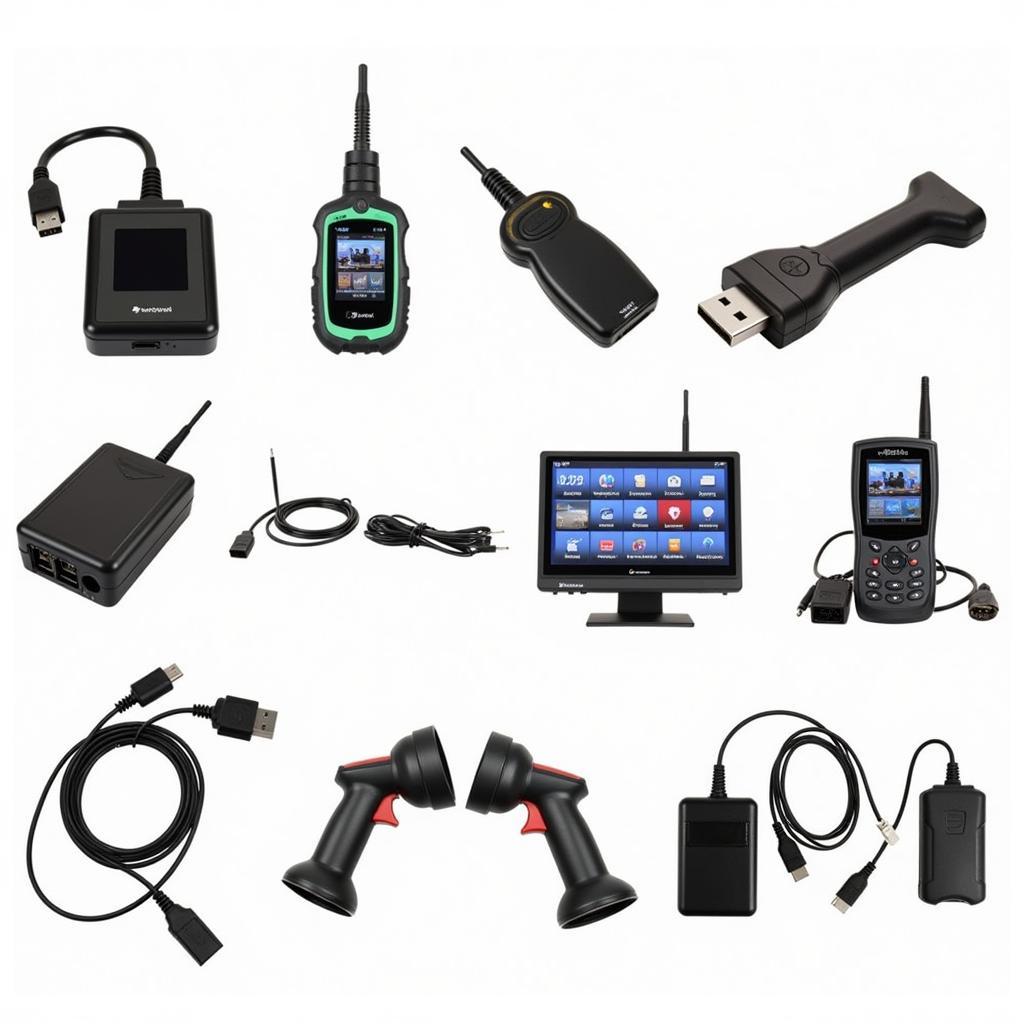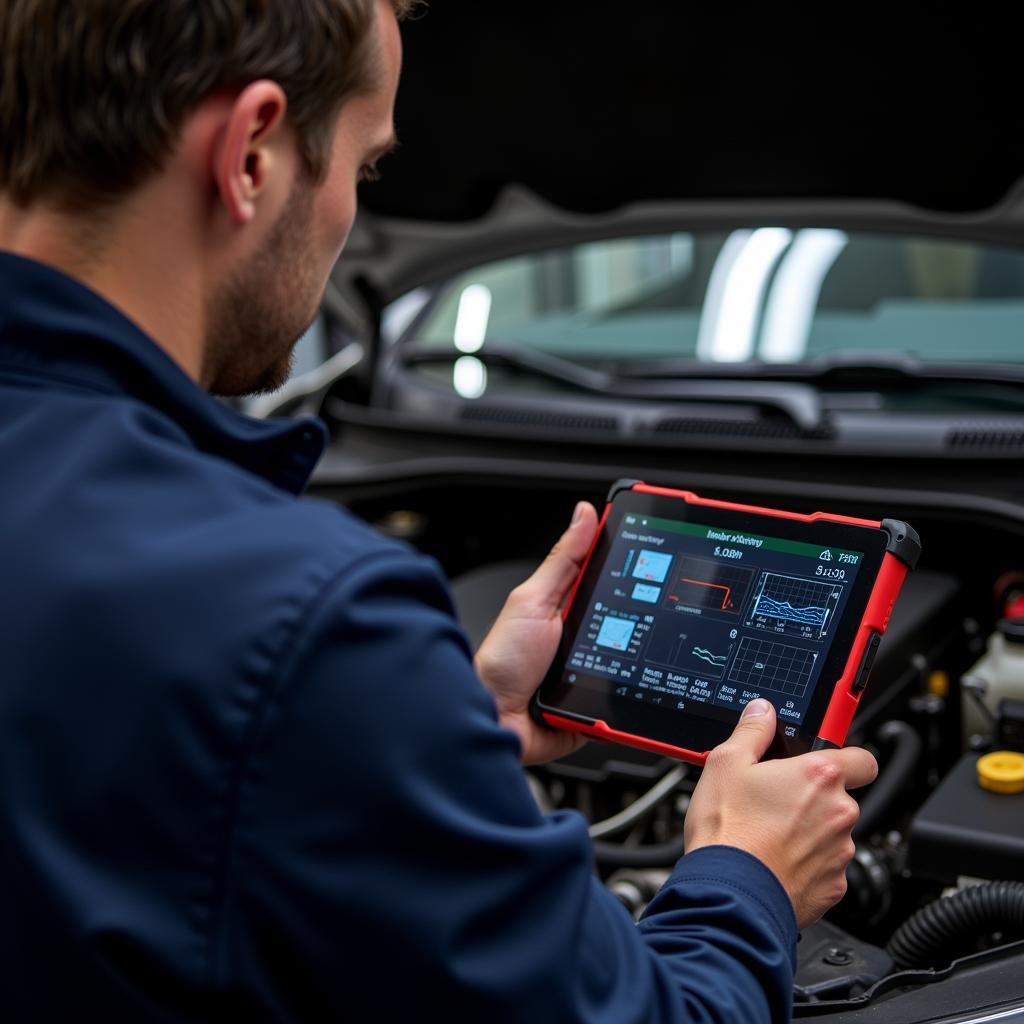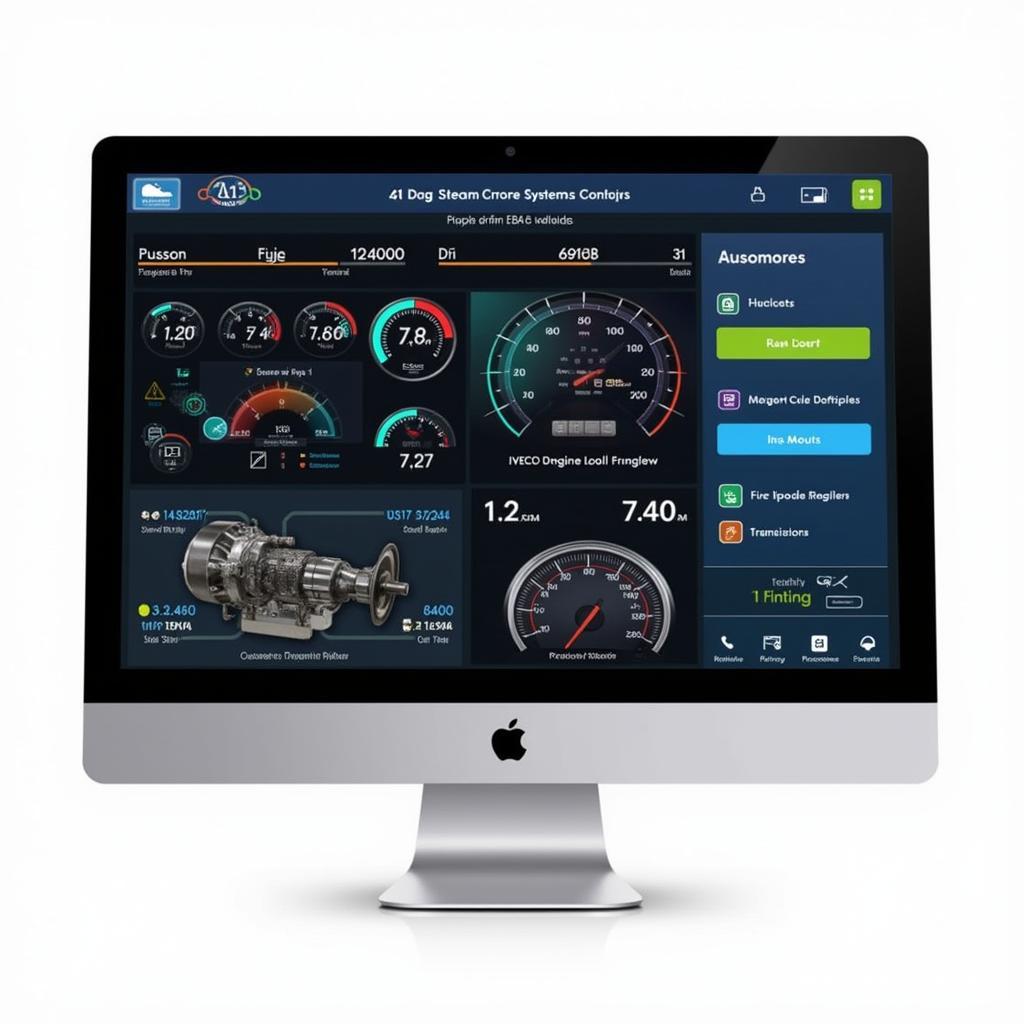In the realm of modern vehicles, where intricate electronics reign supreme, the ability to peer into the “brain” of a car is paramount. Just as a doctor relies on medical imaging to diagnose ailments, automotive technicians and car owners are increasingly turning to sophisticated Diagnostic Tools To Look At The Brain of a vehicle – the Engine Control Unit (ECU). These powerful tools, often referred to as automotive scanners, provide a window into the complex network of sensors, actuators, and electronic modules that govern every aspect of a car’s operation.
Deciphering the Enigma: Why Diagnostic Tools Matter
Gone are the days of relying solely on mechanical intuition and a keen ear to diagnose car problems. Today’s vehicles are marvels of engineering, incorporating an intricate web of electronic systems that control everything from engine performance and fuel efficiency to safety features and driver assistance systems. When a problem arises, pinpointing the root cause can be like finding a needle in a haystack without the right tools.
This is where diagnostic tools come into play. These tools serve as a direct line of communication with the ECU, allowing you to:
- Retrieve Diagnostic Trouble Codes (DTCs): Think of DTCs as the car’s way of telling you something is wrong. These alphanumeric codes correspond to specific faults detected by the ECU, providing valuable clues about the nature of the problem.
- Access Live Data Streams: Imagine being able to see your car’s vital signs in real-time. Diagnostic tools enable you to monitor various parameters such as engine RPM, coolant temperature, oxygen sensor readings, and more, helping you identify anomalies and assess system performance.
- Perform Actuator Tests: These tests allow you to command specific components, like fuel injectors or solenoids, to activate. This helps verify their functionality and pinpoint faulty actuators.
- Program and Configure Modules: In some cases, diagnostic tools can be used to program new modules, update software, or adjust vehicle settings.
Navigating the Labyrinth: Choosing the Right Diagnostic Tool
The world of automotive diagnostic tools is vast and varied, ranging from basic code readers to professional-grade scanners with advanced functionalities.
 Types of Automotive Scanners
Types of Automotive Scanners
Selecting the right tool depends on your needs, budget, and technical expertise. Here’s a quick rundown:
- Basic Code Readers: As the name suggests, these entry-level tools primarily focus on retrieving and clearing DTCs. They are affordable and user-friendly, making them suitable for DIY enthusiasts.
- Mid-Range Scanners: These tools offer a wider range of features, including live data streaming, actuator tests, and some programming capabilities. They strike a balance between functionality and affordability, catering to both DIYers and professional technicians.
- Professional-Grade Scanners: Designed for experienced technicians and workshops, these top-of-the-line tools boast advanced functionalities like bi-directional control, oscilloscope functions, and comprehensive vehicle coverage.
For those seeking a reliable and versatile wireless car diagnostic tool, the options available at ScanToolUS offer excellent performance and ease of use.
Beyond the Codes: Expertise Still Reigns Supreme
While diagnostic tools provide invaluable insights into a vehicle’s electronic systems, it’s important to remember that they are just tools. Interpreting the data they provide and arriving at an accurate diagnosis still requires a solid understanding of automotive systems, electrical principles, and diagnostic procedures.
For instance, a DTC might indicate a faulty sensor, but further investigation using live data and other diagnostic tests could reveal a wiring issue, a faulty control module, or even an underlying mechanical problem.
“Think of diagnostic tools as an extension of your senses,” says John Miller, a seasoned automotive technician with over 20 years of experience. “They provide the data, but it’s your knowledge and expertise that transform that data into a solution.”
 Mechanic Diagnosing Car Problem
Mechanic Diagnosing Car Problem
Unveiling the Ferrari 360’s Electronic Soul: A Case for Specialized Tools
The increasing complexity of modern vehicles, particularly high-performance models, has led to the emergence of specialized diagnostic tools tailored to specific makes and models. For owners of vehicles like the Ferrari 360, investing in dedicated Ferrari 360 diagnostic tools can be essential for unlocking the full potential of these automotive masterpieces. These specialized tools often provide access to proprietary parameters, advanced programming functions, and a level of detail that generic scanners might lack.
Empowering the Modern Automotive Enthusiast
In an era defined by technological advancements, automotive diagnostic tools have become indispensable for anyone involved in vehicle maintenance and repair. They empower car owners and technicians alike to delve into the electronic intricacies of modern cars, enabling them to diagnose problems accurately, expedite repairs, and keep vehicles running smoothly.
Whether you’re a DIY enthusiast looking to troubleshoot a check engine light or a seasoned technician tackling complex electronic gremlins, understanding and utilizing the power of diagnostic tools is no longer optional—it’s essential.
For all your diagnostic tool needs and expert advice, feel free to contact ScanToolUS at +1 (641) 206-8880 or visit our office at 1615 S Laramie Ave, Cicero, IL 60804, USA.


